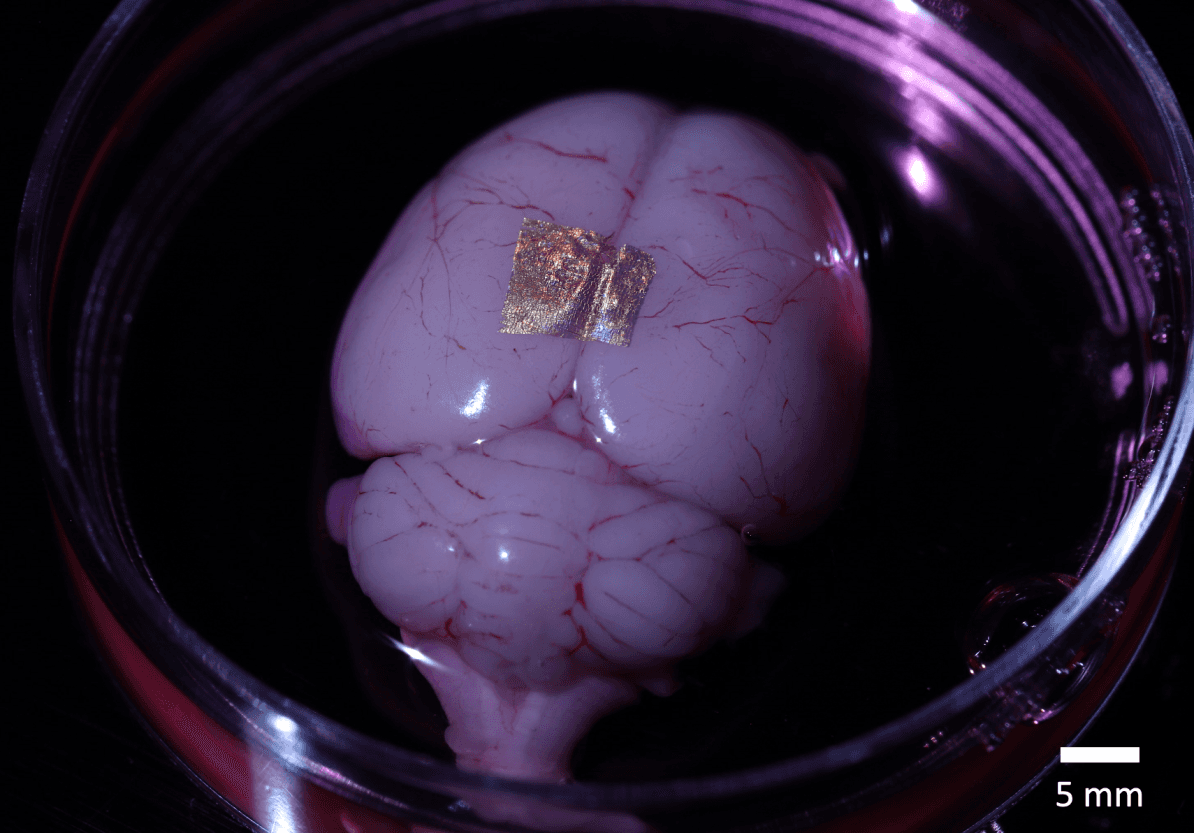Tiny Cellular Tattoos Emerge as Nanoscale Health Sentinels
Cutting-edge Breakthrough Enables Live Cell Tracking through Innovative Tattoo-like Arrays
Aug 9, 2023
False-colored gold nanodot array on a fibroblast cell (Kam Sang Kwok and Soo Jin Choi, Gracias Lab/Johns Hopkins University)
In a remarkable stride towards revolutionizing cellular health monitoring, a team of engineers has introduced a groundbreaking technology: nanoscale tattoos. These intricate arrangements of dots and wires possess the unique ability to adhere to live cells, heralding a new era in individual cell health tracking.
Recently published in Nano Letters, the pioneering technology ushers in the capability to affix optical components or electronics onto living cells, employing tattoo-like arrays that exhibit unparalleled adhesive prowess. These arrays flex and mold to the contours of the cells' aqueous outer structure, effectively bridging the gap between traditional sensors and the dynamic world of biological entities.
“If you imagine where this is all going in the future, we would like to have sensors to remotely monitor and control the state of individual cells and the environment surrounding those cells in real time,” disclosed David Gracias, a professor of chemical and biomolecular engineering at Johns Hopkins University, who spearheaded the advancement. “If we had technologies to track the health of isolated cells, we could maybe diagnose and treat diseases much earlier and not wait until the entire organ is damaged.”
The core of this innovation lies in the deployment of arrays that act like barcodes or QR codes upon living cells. These electronic tattoos are minute in scale, adhering to living entities that are magnitudes smaller than the head of a pin and can stay adhered to soft cells for an impressive span of 16 hours, even amidst their ceaseless movement.

The researchers constructed the tattoos in the form of arrays composed of gold—a material known for its capacity to avert signal deterioration and distortion within electronic circuits. These arrays are affixed to fibroblasts, the cellular architects responsible for the construction and maintenance of vital human tissue. The process entails treating the arrays with molecular adhesives and employing an alginate hydrogel film, a pliable laminate that can be dissolved after the array has been adhered. This maneuver leverages the bond between the molecular glue and a film secreted by cells known as the extracellular matrix.
Venturing into uncharted territory, the team addresses the perennial challenge of harmonizing optical sensors and electronics with the intricate fabric of biological matter at the singular cellular level. "We’ve shown we can attach complex nanopatterns to living cells while ensuring that the cell doesn’t die," remarked Gracias, highlighting the importance of cellular vitality in this intricate dance between technology and biology.
The dots and wires are meticulously spaced, a feat of precision reminiscent of the layout of electronic chips. Gracias elucidates, "This is an array with specific spacing, not a haphazard bunch of dots."
The team envisions the attachment of more complex nanocircuits designed for prolonged integration. Furthermore, diverse cell types are set to undergo experimentation, widening the horizon of potential applications.


















